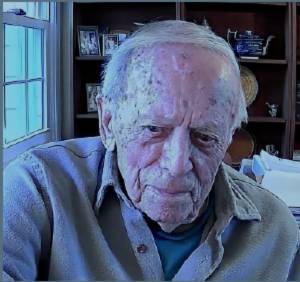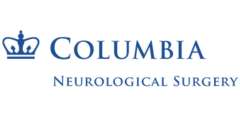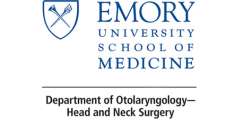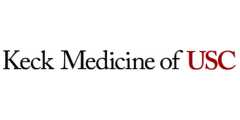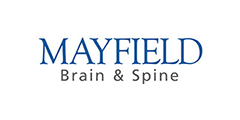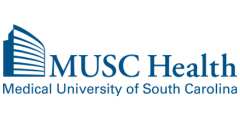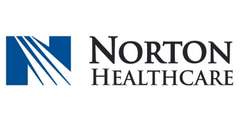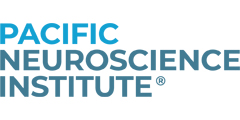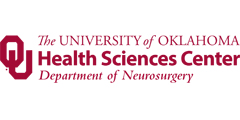Did Daniel Boone (1734-1820) have an Acoustic Neuroma?
By Richard J. Barker
Richard J. Barker is Professor of History Emeritus at Montclair State University in Upper Montclair, NJ. He was one of the founder-members of the Acoustic Neuroma Association of NJ (ANA/NJ) in 1995 and served for many years as editor of the ANA/NJ Newsletter.
In 1990, the year of his retirement, he was diagnosed with a small 1.2 cm acoustic neuroma and elected to have treatment by the newly introduced Gamma Knife radiation. An MRI scan in 2020 showed that the tumor had decreased in size to 4 mm and was inactive. As an historian, the author has valued the benefits of historical perspective when dealing with acoustic neuroma. He remembers with appreciation the 1990 article in NOTES by then ANA President Ginny Fickel entitled “A LOOK BACK: How Acoustic Neuroma Surgeries Used to Be Done.” To the great benefit of newly diagnosed acoustic neuroma patients, that article traced advances in surgery procedures over a 100-year period, as far back as 1891 when chisels and mallets were still in use. What’s intriguing about the present article is that the author asks for “A LOOK BACK” for 200 years, to the time of Daniel Boone (1734-1820) and the Founding Fathers of our nation – and thus to the time when acoustic neuroma was not even known. The author concedes that asking if Daniel Boone had an acoustic neuroma is therefore “quite a stretch." Writing the article did involve probing about in what may be called “the realm of the unverifiable.” But read on. Historical perspective is the article’s major contribution.
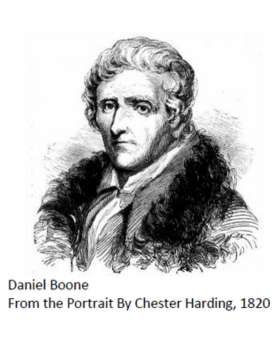 Did Daniel Boone (1734-1820), our most famous American frontiersman, have an acoustic neuroma? The question is quite a stretch since the tumor was essentially unknown during Boone’s lifetime. Still, his biographers have all recorded how he complained of hearing loss as he aged, and hearing loss is a main symptom of a developing acoustic neuroma. Acoustic neuroma patients like myself are most likely to suspect the presence of an acoustic neuroma whenever a hearing loss problem is identified. In fact, it’s been estimated that even today as many as 1% of these tumors go undiscovered. Asymptomatic, or at least never diagnosed, they are referred to in the medical literature as ‘occult’ or ‘hidden’. Some are found only at autopsy. MRI-based research investigating acoustic neuroma growth rates has shown that as many as 40-50% of diagnosed small tumors (1.5 cm or less) do not continue to grow at all. Many are being found in older people during unrelated MRI brain scans, such as for headache, and are dubbed ‘incidentalomas’ for the general category of unsuspected findings. Thus it’s a legitimate question and intriguing to consider that Daniel Boone might have had an acoustic neuroma that neither he nor his doctor would have known anything about.
Did Daniel Boone (1734-1820), our most famous American frontiersman, have an acoustic neuroma? The question is quite a stretch since the tumor was essentially unknown during Boone’s lifetime. Still, his biographers have all recorded how he complained of hearing loss as he aged, and hearing loss is a main symptom of a developing acoustic neuroma. Acoustic neuroma patients like myself are most likely to suspect the presence of an acoustic neuroma whenever a hearing loss problem is identified. In fact, it’s been estimated that even today as many as 1% of these tumors go undiscovered. Asymptomatic, or at least never diagnosed, they are referred to in the medical literature as ‘occult’ or ‘hidden’. Some are found only at autopsy. MRI-based research investigating acoustic neuroma growth rates has shown that as many as 40-50% of diagnosed small tumors (1.5 cm or less) do not continue to grow at all. Many are being found in older people during unrelated MRI brain scans, such as for headache, and are dubbed ‘incidentalomas’ for the general category of unsuspected findings. Thus it’s a legitimate question and intriguing to consider that Daniel Boone might have had an acoustic neuroma that neither he nor his doctor would have known anything about.
Acoustic Neuroma /Vestibular Schwannoma. A benign tumor of the vestibulocochlear (8th cranial) nerve that passes from the inner ear to the brain. The tumor originates when a by-chance mutation in the NF2 gene results in abnormal growth of the Schwann cells that form the insulating myelin sheath of the nerve. Although non-cancerous, the tumor can do serious harm and even become life-threatening if it grows to press on other cranial nerves and vital structures such as the brainstem.
It needs to be considered that cases of acoustic neuroma would have been very rare during Boone’s lifetime. The incidence of the tumor for the United States was calculated in 2015 at about 10.9 cases per million of population per year. With a total population of over 300 million, that figured to about 3,300 cases per year. But for the much smaller and still mainly east coast population of the emerging United States in Boone’s day (9.6 million, according to the 1820 census) the total number of cases could have been as low as 90 per year. Or even lower than that, since most acoustic neuromas occur between the ages of 45 and 70 and life expectancy at birth was then only about 40-45 years. On average, white males lived only into their late forties.
Hearing loss was then thought of mostly as an unavoidable reflection of aging and was not too much worried about. Little was known about the testing of hearing. It was common practice to use a ticking watch to measure how well a person could hear. What early Americans worried about mainly and too often experienced tragically were the infectious diseases – the great killers of the time, such as smallpox, yellow fever, malaria, tuberculosis, cholera, measles, diphtheria, dysentery, typhoid and whooping cough. To have lived as long as he did, Boone was fortunate to have survived his own childhood bout of smallpox. Historian Jeanne Abrams, in her excellent study Revolutionary Medicine: The Founding Fathers and Mothers in Sickness and Health (2013), has documented the distressing health experiences of members of well-to-do and highly educated families in American society at the time: Benjamin Franklin (d. 1790), George Washington (d. 1799), Thomas Jefferson (d. 1826), John Adams (d.1826) and James Madison (d. 1836). She notes how, in particular: “The letters of the founding mothers reveal the frequency of a variety of illnesses that could turn serious in moments, and the pervasive fear of sickness and early death that hovered over all of America’s founders and indeed their entire generation.” In this morass of deadly infectious diseases, even the symptoms of a large and critical-stage acoustic neuroma (nausea, severe headache, vomiting, mental confusion, coma) could easily have been misdiagnosed.
Acoustic neuroma began to be observed first in Europe in 1777, the year Boone was badly wounded during Shawnee attacks on his Boonesborough settlement in Kentucky. In that year at Leiden University in the Netherlands, Eduard Sandifort (1742-1814), a professor of anatomy, published the first postmortem description of an acoustic neuroma. He had discovered “a small body clinging to the right auditory nerve of such toughness that it was supposed surely to be of cartilage. . .It was not possible [he observed] to separate the nerve from the lesion and neither was it possible to free it entirely from the foreman which the nerve enters.” He concluded that this probable cause of the deceased patient’s hearing loss was beyond the reach of medication or surgery and was therefore incurable.
Sandifort’s conclusion in 1777 was valid. The symptomology of the tumor only began to be described seriously during the 1820s, and even then, the exact localization of the tumor correlated with symptoms remained a major problem. The Schwann cells that multiply to form the tumor had to wait until 1838 to be identified by the German physiologist Theodore Schwann. The first ‘successful’ surgery for total removal of an acoustic neuroma was reported almost 60 years later, in 1895, by Thomas Annandale, a general surgeon at the Royal Infirmary in Edinburgh, Scotland. In modern terms, it may be said that by then the tumor was known and was being treated as an “evidence-based disease entity.”
It’s intriguing that America’s foremost physician during Boone’s lifetime was Dr. Benjamin Rush (1746-1813). By 1796, Rush was chairman of the committee on the Theory and Practice of Medicine at the University of Pennsylvania Medical School (estab.1786). By then he had also completed his massive four-volume work entitled Medical Inquiries and Observations. The work “stunned the medical world,” writes Harlow Giles Unger, his most recent biographer.”It was the broadest, most modern, and most forward-looking work on health and medical care ever seen.” And yet, the Inquiries said nothing to indicate that Rush knew anything about acoustic neuromas. Also, his ‘Notes on Deafness,’ which he drafted in 1799, provided advice for dealing with hearing loss, but mainly of the practical experiential type found in the various ‘self-help’ writings of the day: e.g., Keep the head warm! Watch out for ear wax buildup! Rush was famous (or infamous) at the time mainly for his insistence on ‘heroic’ blood-letting and purgative medicines for curing diseases. His special mercury-laden pills were known widely and appropriately as Rush’s ‘Thunderbolts’. “To him, all diseases were due essentially to a single cause, namely, vascular tension, and for this there was one universal remedy – to decrease the tension by removing blood in great quantity.” His insistence on this ‘cure-all’ practice during the yellow fever epidemic of 1793 in Philadelphia greatly damaged his reputation and almost ruined his medical career. Doctors at the time, including Rush, were only just beginning to move from theory-based to evidence-based medicine.
It’s quite possible that Boone’s hearing loss was a result of his reliance on another popular ‘cure-all’ of the time, namely, Calomel (mercurous chloride). By the 1790s, Boone was using this harsh and poisonous purgative regularly for treating his disabling and worsening rheumatic disorders. “I am well in health, but deep in Markury”(sic), he wrote in one of his letters (October 5, 1809). Long-term mercury exposure has been shown to be ototoxic, inducing irreversible damage to the peripheral and central auditory system. Yet even in September 1820, when Boone was on his deathbed, his doctor, John Jones (1789-1842), who was the husband of Minerva Callaway, one of Boone’s granddaughters, advised still another calomel treatment. Boone refused, saying it would be his last sickness. He said that he was ‘worn out.’ He was distressed that he could no longer go on the ‘long hunt.’ At the end, as his youngest son Nathan recounted later in the Draper Interviews (1851), Boone complained of “an acute burning sensation, such as he had never before felt, in his breast, which continually grew worse.” Biographer John Mack Faragher has calculated that he died just “a month shy of his eighty-sixth birthday.” There was no autopsy.
It’s noteworthy that during his last days Boone was able to discuss funeral arrangements at length with his family. He asked Olive Vanbibber Boone, Nathan’s wife, to “Please sing to me.” “He enjoyed the innocent prattle of his grandchildren.” Nathan reported in 1851 that his father’s hearing “became hard” as he aged, but it would appear he was still doing pretty well at 86 years. Nathan made no mention of any other symptoms of a developing acoustic neuroma, such as tinnitus or imbalance.
So, did Daniel Boone, our most famous American frontiersman, have an acoustic neuroma that he knew nothing about? It’s a possibility, yes. Most possibly, he could have had a small ‘hidden’ acoustic neuroma that was slow-growing, and which an autopsy could have revealed. A present-day MRI scan would most likely recommend a ‘Wait-and-Watch’ regimen, which Boone was essentially doing any way back in the 1800s. However, there are at least two other possible causes of Boone’s hearing loss, both unrelated to acoustic neuroma. Firstly, his hearing loss could have resulted from long-term over-exposure to loud noises. He was after all a great hunter and famous Indian fighter. Gunfire over many years could have damaged the important sensory hair cells of his inner ear and caused loss of hearing. And secondly, there’s Boone’s long-term ingestion of mercury in the calomel ‘cure-all’ medication. Perhaps this was the main cause of his hearing loss? (as well as his death?). But finally, of course, in the absence of any available medical records of Boone’s illnesses, and the fundamental lack of knowledge of acoustic neuroma during his lifetime, we will never know for certain about any of this. The true nature of Daniel Boone’s hearing loss will remain in what has aptly been called “the realm of the unverifiable.”
Further Reading
Binger, Carl. Revolutionary Doctor: Benjamin Rush, 1746-1813. New York, Norton, 1966.
Dary, David. Frontier Medicine. From the Atlantic to the Pacific, 1492-1941. New York, Knopf, 2008.
Faragher, John Mack. Daniel Boone. The Life and Legend of an American Pioneer. New York, Holt, 1992.
Glasscock, Michael. “History of the Diagnosis and Treatment of Acoustic Neuroma,” Archives of Otolaryngology, Vol.88(6), 1968.
Hammon, Neal O. (Editor), My Father, Daniel Boone. The Draper Interviews with Nathan Boone. Lexington, KY, University of Kentucky Press, 2012.
Kaufman, M.H. “John Bell (1763-1820), the ‘father’ of Surgical Anatomy,” Journal of Medical Biography, Vol.13(2), 2005.
Machinis, Theofelos et al. “History of Acoustic Neuroma Surgery,” Neurosurgery Focus, Vol.18, 2005.
Ramsden, Richard. T. “History of Vestibular Schwannoma Surgery,” in Matthew L. Carlson (Editor), Comprehensive Management of Vestibular Schwannoma. New York, Thieme, 2019.
Unger, Harlow Giles. Dr. Benjamin Rush: The Founding Father Who Healed a Wounded Nation. New York, DaCapo Press, 2018.

